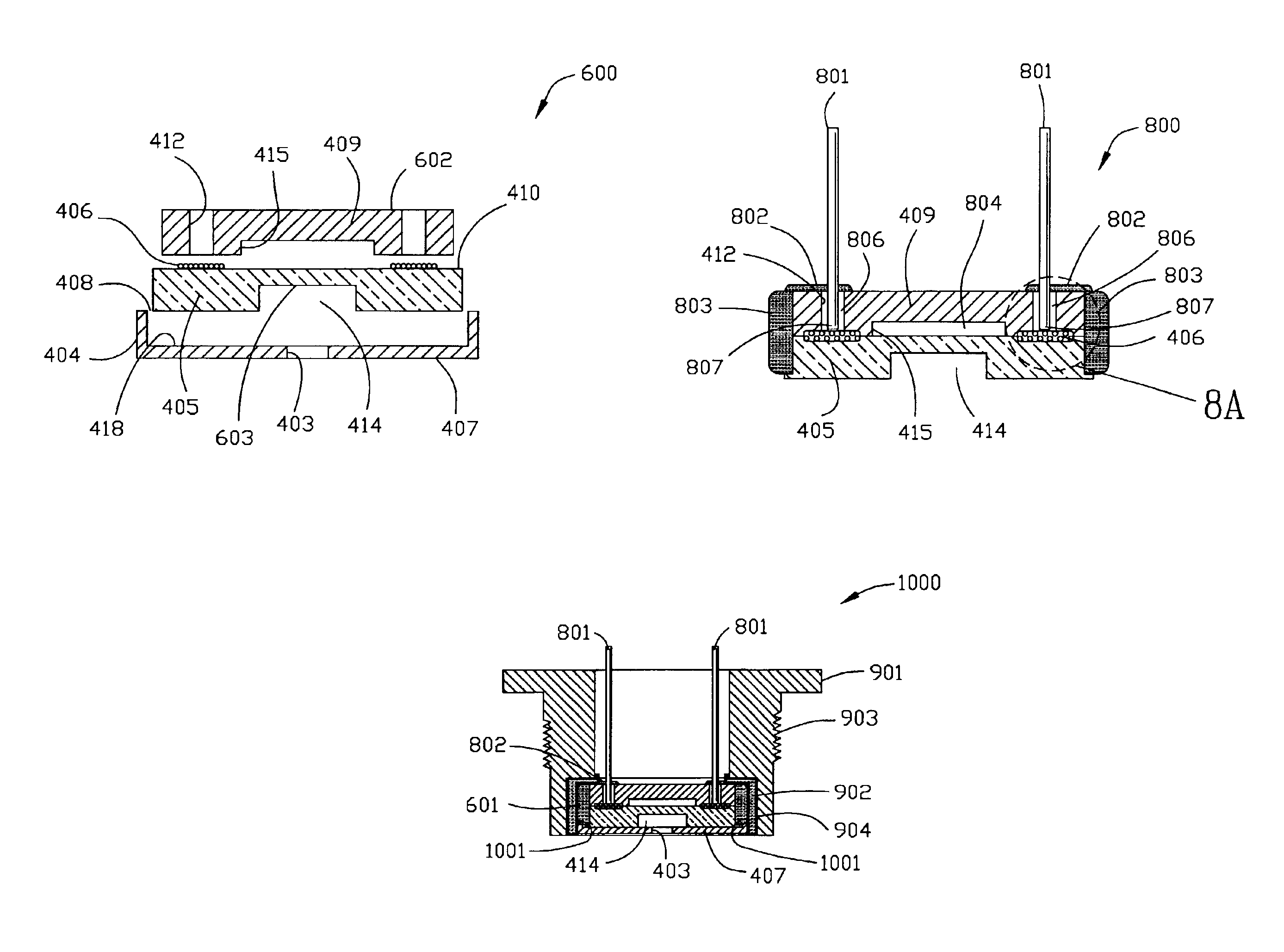MEMS direct chip attach packaging methodologies and apparatuses for harsh environments
a technology of direct chip and packaging method, applied in the direction of fluid pressure measurement, microstructured devices, instruments, etc., can solve the problems of increasing the risk of sealing agent sipping into the reference cavity, rendering the device useless, and conventional semiconductor electronic and sensing devices limited to operating in temperatures
- Summary
- Abstract
- Description
- Claims
- Application Information
AI Technical Summary
Benefits of technology
Problems solved by technology
Method used
Image
Examples
Embodiment Construction
FIG. 4 is a plan view 400 of the instant invention illustrating a section of the array of the bottom cover or substrate 402, a sensor 405 in the housing of one cell 407 of the bottom cover substrate 400, and a sensor 405 in another cell 407 of the bottom cover substrate along with the top cover 409 residing above the sensor 405. Top cover 409 is illustrated diagrammatically and is shown not connected to the array of which it is a part.
In one embodiment, each sensor or electronics chip 405 is dropped into the corresponding cells 407 arranged in an array 400 as shown in FIG. 4. The cell-array 400 is made from material that will survive high temperatures up to 700° C. such as aluminum nitride or silicon carbide, preferably in amorphous form for reduced cost without loss of performance. It will also have thermomechanical properties close to that of the material in which the chip 405 is made. Typically, the sensor chip will be made from silicon carbide or aluminum nitride as taught in my...
PUM
 Login to View More
Login to View More Abstract
Description
Claims
Application Information
 Login to View More
Login to View More - R&D
- Intellectual Property
- Life Sciences
- Materials
- Tech Scout
- Unparalleled Data Quality
- Higher Quality Content
- 60% Fewer Hallucinations
Browse by: Latest US Patents, China's latest patents, Technical Efficacy Thesaurus, Application Domain, Technology Topic, Popular Technical Reports.
© 2025 PatSnap. All rights reserved.Legal|Privacy policy|Modern Slavery Act Transparency Statement|Sitemap|About US| Contact US: help@patsnap.com



